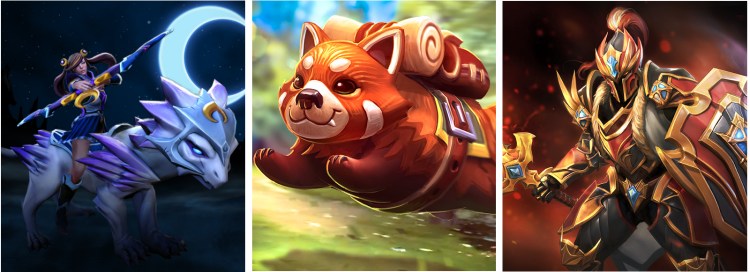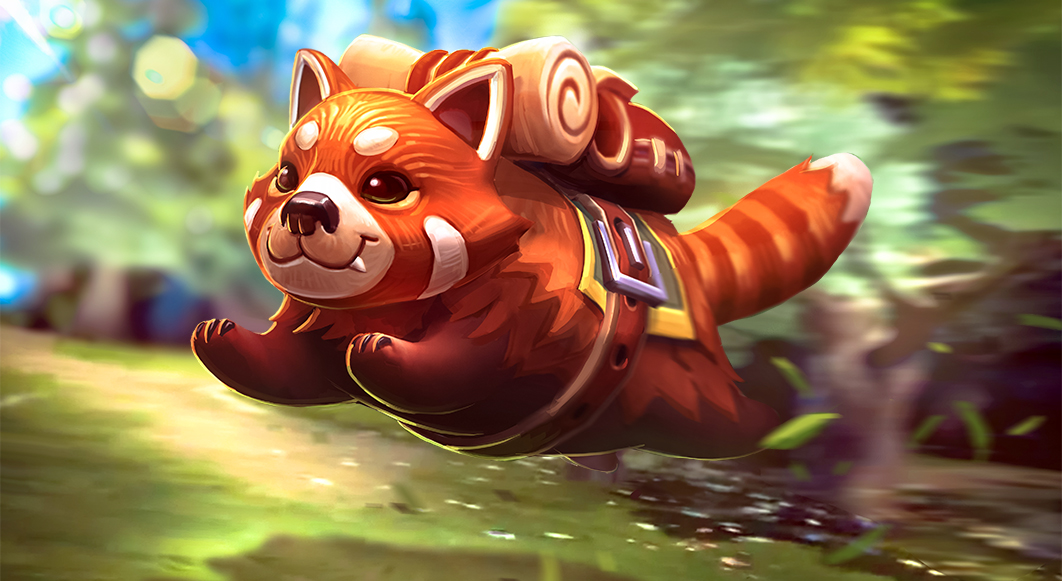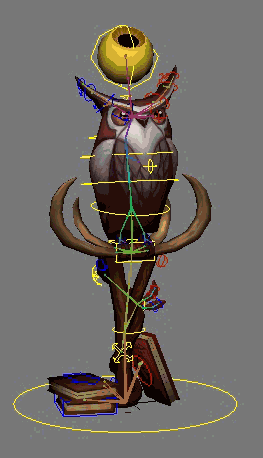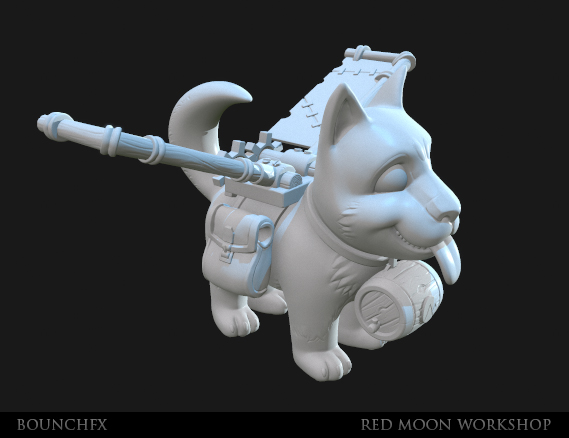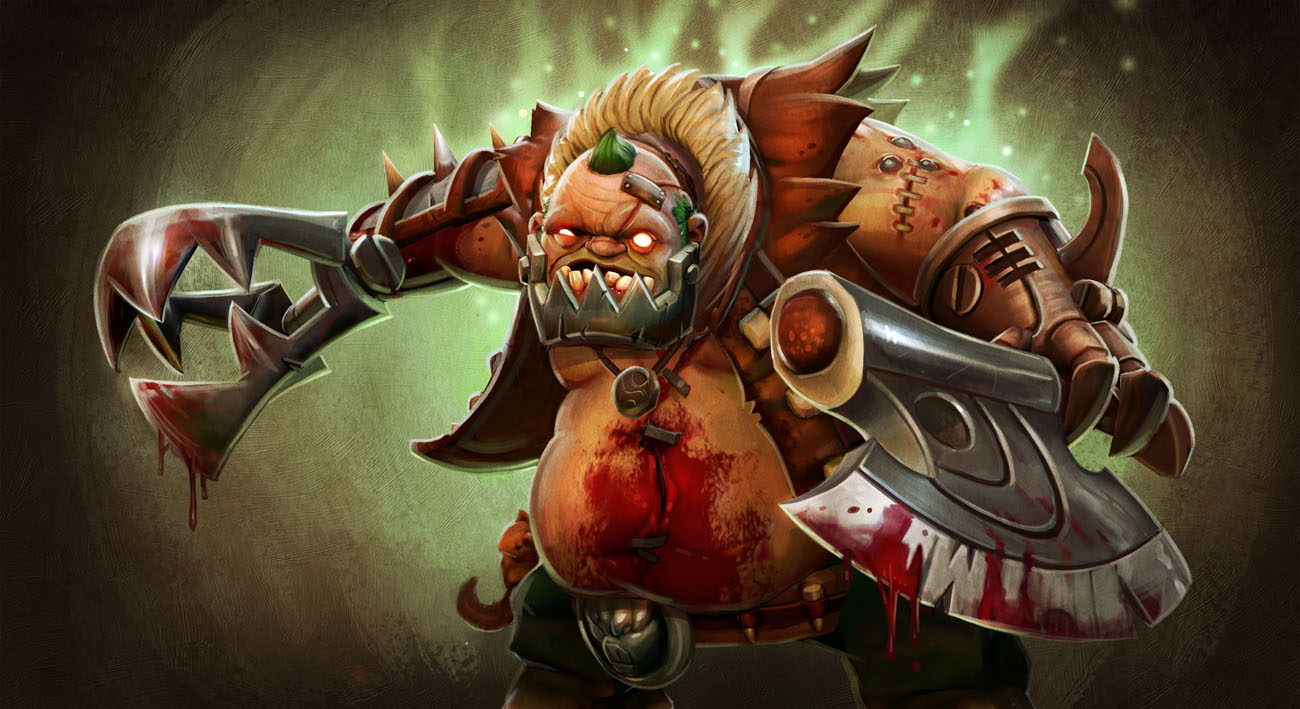Freedom of expression
The creative freedom that Valve’s Dota 2 Workshop offers is absolutely key to its appeal to the Red Moon team. With no one telling them what to make and when, the three artists can bring their ideas to life without restraint.
“I’m personally very grateful for the fact they even set this up like this,” said Helenek. “It’s empowering to content creators.”
“Most of the companies I was at,” added Brozzi, “there was almost like a certain lack of creative freedom, and the Dota 2 Workshop allowed us to basically take things into our own hands. There’s no boss. We determine what we want to do. There’s nobody telling us that we can’t [do something] other than each other.”
“If it works,” said LaDue, “it works because of your creativity, and not because someone high up is saying, ‘You guys have to do this in the game,’ and you’re sitting at your desk thinking, ‘Why would they make this decision?’”
I asked if there wasn’t still someone approving or disapproving their projects.
“That would be Valve,” said Brozzi. “The community votes on it, and then Valve makes the final call. I think we’ve spent months trying to figure out how they work. It’s interesting — they’re not a very transparent company.”
Communicating with Valve
In my discussions with various Dota 2 Workshop artists, this is something that came up time after time. Communication with Valve is practically non-existent.
The guys at Red Moon Workshop read the weekly patch notes for Dota 2, trying to keep up with changes to the game that are never shared with them directly. It’s frustrating at times, but the Dota 2 community is tight-knit, and everyone shares what little information he has.
“They don’t really talk to anyone,” LaDue said of Valve. “They will make changes to some heroes without ever actually announcing it publicly. Slardar, for example, is due for an update lately, so they probably won’t put in any of his stuff.
“They never actually say that; it’s just assumed by the community based on the file changes.”
The Red Moon team is finally getting a handle on the kind of designs that Valve wants to see for its heroes after “months of trial and error,” but there are still times when it doesn’t go to plan.
“I’m going to point out Oroboros’s Omniknight [set] because that shit was awesome,” said LaDue, explaining how the item set created for the Dota 2 hero appeared in the files for a game patch but has never actually made it into the game. “I think this was like October or September,” he said, “and it still has just, like, been in oblivion. This kind of weird limbo.”
Brozzi offered an explanation for the set’s non-appearance, based on a change in the character model by Valve. “Sometimes they rework the heroes in Dota 2,” he said, “so they might redesign them or recolor them or something, and at the time Omniknight was gold and blue. We released it, and a week later, they changed it to red and white.”
Bad timing, then, which meant more work for the Red Moon Workshop. But having redesigned the set at Valve’s request, it remains in limbo.
Even the team’s best-known creation, Redpaw, wasn’t easy to get approved. “He was sitting in the Workshop for over a year,” said LaDue. “Sometimes it’s just a matter of time. It does come down to Valve. They can ‘yay’ or ‘nay’ whatever they please.”
Growing success
Red Moon Workshop is currently making its first item set for a professional Dota 2 player. It will be pretty special, by the sounds of it, with “extra bells and whistles” compared to regular player sets. It’s also one time when Valve will communicate with the studio to make sure everything needed is in place.
The team has also worked with Nexon, the publisher of Dota 2 in Korea and Japan, as well as Chinese online gaming company Perfect World. Red Moon originally thought that working for tournaments and gaming companies might be more financially rewarding. It wasn’t.
“In the end, the answer was a really huge ‘no, it does not help make more money,’” said LaDue.
It did, however, expose the team further to the community and help to spread its work through word-of-mouth. “I think we can trace every client that we’ve had back to the original one that we had,” said Brozzi. “We ended up getting tons of opportunities off of one project.”
Going beyond the game
With Dota 2’s popularity growing at an exponential rate, there are other business opportunities available beyond the Workshop itself, not least of which is physical merchandising.
It’s something that Red Moon wanted to be involved with from the start and one of the reasons LaDue left a studio job for Dota 2.
“There’s a bunch of companies internationally trying to get into the merchandise scene [for Dota 2],” said Brozzi. “We were working for one in Europe we were supposed to do a large amount of merchandise for.” Despite several months crunching on merchandising projects, however, it didn’t work out as expected.
“I think Valve gave preference to another merchandise company,” said Brozzi. “So we ended up with this weird situation where some of our stuff was going to get included, but we’d done a bunch of other work that right now we’re trying to figure out what to do with.
“Its very indicative of the way the Valve system works,” he added. “You never know what’s going to happen.”
The merchandising opportunities are still there, though, as long as you know who to talk to, and the team is currently working out which company to team up with to bring a Redpaw plush to market, among other ventures.
“At the [International Dota 2 Championship] was the first big wave of user-generated content turning into physical merchandise,” said Brozzi. “It’s going to continue to happen, honestly.”
And Dota 2 isn’t the end of Red Moon’s ambitions. All three members believe that the Dota 2 Workshop has proved too successful for Valve not to expand to other games, and they can imagine making items for Left 4 Dead 3 in a not-too-distant future.
“I think that going forward, I see this as being Valve’s No. 1 business model,” said LaDue.
